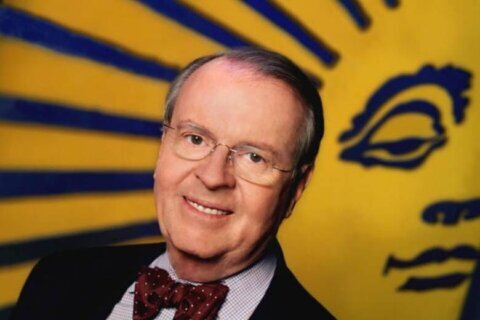
After more than 40 years (on and off) of tournament chess playing, I’m used to inaccurate portrayals of the game and its devotees. So I turned on Netflix’s new original miniseries “The Queen’s Gambit” with some hope and some trepidation.
I had read the novel of the same name by Walter Tevis (“The Hustler,” “The Color of Money”) when it came out in 1983, and I remember some of the chess details being quite accurate, and some quite wrong. However, I was only 19 then, and much less forgiving about the sacrifices that have to be made for the sake of a good dramatic arc.
First off, let me add to the chorus of voices praising Anya Taylor-Joy’s performance as the flinty, intense chess prodigy Beth Harmon, who rises to the top echelon of the chess world in remarkably quick fashion, thanks to raw talent and determination.
She believably shuttled between being consumed by the game and being a kid who can suddenly be into cool clothes and young men and enjoys the distinctions that talent and achievement can bring.
I was also stunned by the ferocity of Isla Johnston, playing Harmon as a young girl who discovers chess in the janitor’s basement of a bleak Kentucky orphanage.
The story itself petered out at the end into something familiar and sentimental. I’ll warn that there are spoilers below, but you’ll probably see them coming from a mile away.
Of course, one of the stereotypes of chess players that gets reinforced in pop culture is that we’re a pack of ultrasensitive nerds who get unreasonably picky about how their game is depicted. So, I had to spend a long time thinking: How much does any of this matter?
Well, we’ll get to that. Suffice it to say that the thing “The Queen’s Gambit” gets most wrong about chess and chess players has nothing to do with what happens on the board.
Right and wrong
By the end of the seventh and final episode, my impressions of the novel were basically confirmed: The show has some of the most accurate representations of tournament chess I’ve ever seen, which made some of its more obvious howlers even more puzzling.
With chess advisors including the legendary world champion Garry Kasparov and the longtime New York chess teacher Bruce Pandolfini, it’s easy to understand how the show got the accurate details right, and harder than ever to comprehend how the mistakes came to be.
The chess content in “The Queen’s Gambit” falls into two categories: the positions glimpsed on the chessboards, and the references to games, techniques and tactics that Beth and her opponent-colleagues toss into the conversation.
The game action is remarkably realistic. As Pandolfini recently told Chess Life, the games were taken from ancient and recent chess history, with Kasparov phoning in one key position from his travels – a wonderfully complex endgame. While the actors are a little spotty about remembering to write their moves down, they were clearly coached on how to pick up pieces and move them with a familiarity that can’t be faked.
It’s in the terminology that “The Queen’s Gambit” often produces groaners: The janitor advises Beth to take up “the Levenfish and the Najdorf,” which is like telling an aspiring football player to work on running crisp receiving routes and rushing the passer – they’re not complementary.
This inaccuracy is included in the book as well; Pandolfini told Chess Life that he read an early draft of the novel in the early 1980s and made some suggestions for more verisimilitude. Oddly, while Tevis thanked him profusely in the acknowledgements of the book, Pandolfini said the author took none of his suggestions – except the title.
None of this, I realize, is all that important to anyone but chess players – although it still should matter, because any such mistake takes members of the audience out of the world that’s been created. A doctor hearing a character yell, “Cauterize the infarction on the Achilles tendon STAT!” is going to be thinking about something other than whether the patient will pull through.
Sometimes it’s understandable to sacrifice a detail or two for creative license — the “Queen’s Gambit” players’ sporadic attention to the requirement that one write down one’s moves is an example of tolerable inaccuracy. Still, these mistakes could have been fixed so easily.
Does it matter?
The most important thing “The Queen’s Gambit” gets wrong is beyond the chess.
For one thing, the almost complete lack of sexism Beth puts up with in the world of late-1950s and 1960s chess is optimistic at best. For another, Harmon’s spiraling drug use makes for compelling scenes, but International Master Jennifer Shahade, who liked the series on balance, told Vanity Fair that no one plays better chess under the influence of any drug, especially downers.
The thing that really stood out to me was that virtually none of the chess players in “The Queen’s Gambit” play a whole lot of chess.
The Moscow tournament that serves as the climax is perhaps the fifth event depicted in the series. Presumably, she’s played more than that, given that she ages from 13 to 20 throughout seven episodes, but we don’t see it.
The same goes for her foil, Benny Watts (Thomas Brodie-Sangster), who seems to play a couple of tournaments a year. In real life, he would either spend his days giving lessons or he’d be out there playing somewhere every week — and perhaps hustling chess or poker on the side.
This isn’t just a matter of dramatic compression: Anything can become a grind if you do it enough, and while “The Queen’s Gambit” presents chess as a powerful, captivating force in the players’ lives, it’s never depicted as the grinding, difficult profession that it is.
I thought such a moment was coming when Beth returns from Paris and days later is back in the gymnasium of Henry Clay High School in Louisville, Kentucky, but it turns out she’s only there to make an appearance — not to scrounge a rent-covering first prize out of a bunch of local tyros.
More than the nerd thing or even the crazy-person thing, the most grating stereotype of excellent chess players is the notion that their otherworldly natural talent means they don’t have to work very hard. The obscurity of chess in the U.S. means these people work harder than most, for a lot less reward. That’s a more compelling way to show the dedication required, as well as the cost.
The cost of genius
While Beth stays up much of the night analyzing her final adjourned position against her Russian nemesis Borgov (Marcin Dorocinski), Watts assembles a crew of her admirers, ex-lovers and opponents in his New York apartment to look it over as well, surprising her in the morning with sheaves of high-quality analysis shared in a long-distance phone call.
The problem is that some of these players, who have gathered on short notice all the way from Kentucky, aren’t even as good as I am (and no one is bringing me to New York to analyze). While that may be nitpicking, it’s unrealistic how everyone forgives Beth for everything and will do anything for her. In the end, her single-minded pursuit of her genius cost her nothing.
I’m no chess genius, but I have met enough to know that’s not how it works — even if they don’t realize it. Even “The Queen’s Gambit” portrays this isolation beautifully in my favorite scene, where Beth tries to be a normal high schooler for one night. (It does not go well, and I haven’t gotten The Vogues’ “You’re the One” out of my head since.)
So “The Queen’s Gambit” is compelling and reasonably accurate. But while some of the deviations from a chess player’s reality helped the drama along, there are some places where more realism would have been even more dramatic.








